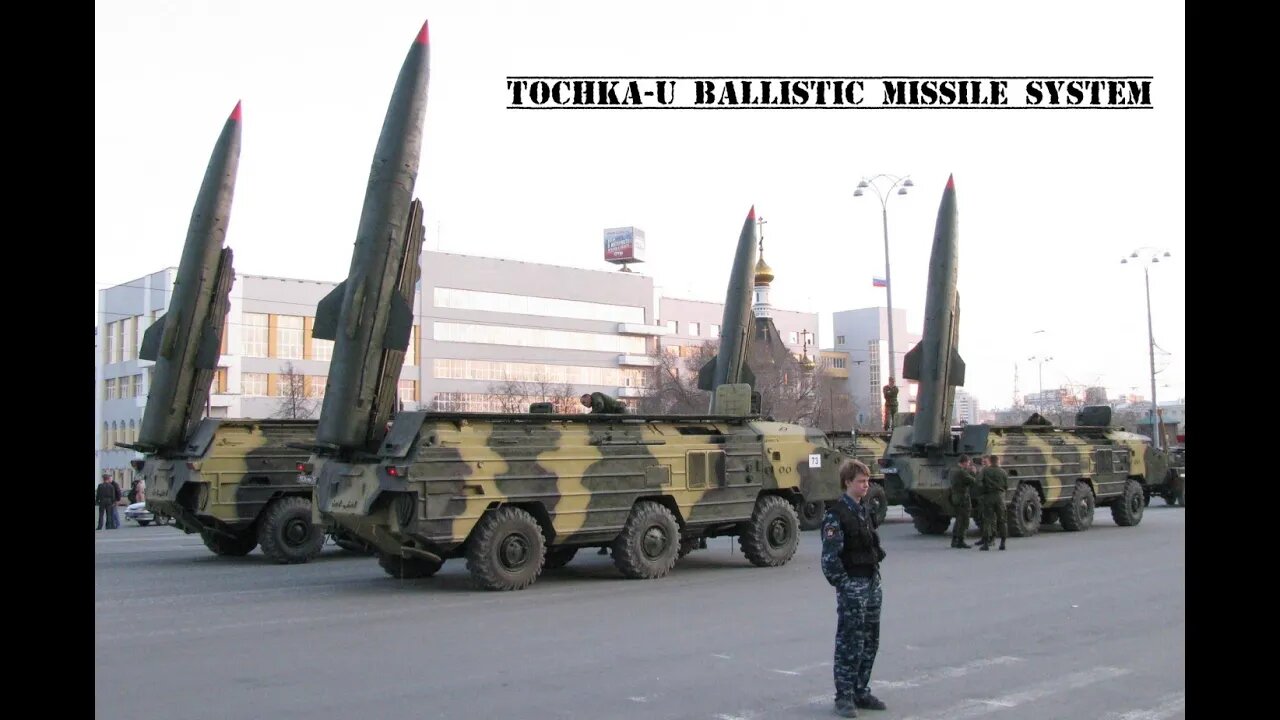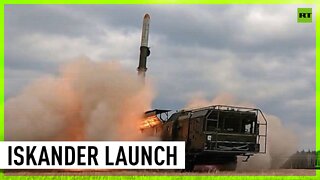Premium Only Content

The Tochka-U Ballistic Missile System - Where Can it Strike?
The OTR-21 Tochka-U "Scarab" ballistic missile system's use in the Ukraine War. SS-21 Scarab is a key weapon in the Ukraine War but has a low CEP (circular error probable)
Ukraine has up to 90 Tochka-U launchers and 500 missiles in service and has used them during the war. Most notably, striking Millerovo and carrying a strike on landing ships at Berdyansk. Ukraine also has 50 Luna-M balliastic missiles, but these are in storage and need a overhaul before being ready for combat.
So, let’s take a look at the Tochka. The first Tochka missiles entered service in 1975, carrying one of three types of warhead—482 kg of high explosive, fragmentation or even nuclear. The original had a range of 15 to 70 kilometers. And a CEP—circular error probably of 150 meters—more on CEP soon.
In 1989, the Tochka-U variant was introduced. The Tochka-U variant had a number of improvements over the original, and it is this which Ukraine operates.
Compared to some Ballistic missiles, it has a relatively short range—only between 120km. It has a circular error probable—CEP of between 75 to 95 m. I had no idea what a CEP was when I started researching the Tochka-U, so I had take a dive into that too.
It is quite complicated and featured a lot of complicated sums and equations which went well over my head. It was also difficult to find a dumbed down explanation, and the videos on youtube were basically robotic auto-voiceovers repeating what was on Wikipedia.
But it can basically be summed up as the radius of a circle where the probability of an impact point being inside is 50 percent of the rounds. So, a missile with 100m CEP—when 100 munitions are fired at the same point, 50 will fall within a circle of 100 m around their impact point.
For example. If our CEP is, say, 1,000 meters (1 km), then we can say that if we aim our missile at a given target, there is a 50% chance that the missile will fall within 1,000 meters of it.
So, with the Tochka-U and its CEP of 75 to 95 meters—there’s a 50 percent chance that the missile will hit within that range.
So, basically, the lower CEP a missile or weapon has, the more accurate it is. This little diagram here visualizes it for the Excalibur guided shell. The M549A1 shell and the M107 at various ranges.
So, is 150m good? For this, I checked other ballistic missiles to compare to. So, Tochka U has a CEP of 75 to 95 M.
The Scud missile has a CEP of a whopping 1km at 300 km range.
The predecessor of the Tochka—the Luna M, had a CEP of 400 meters.
The newer Iskander has a CEP of 5-7 meters with optical homing and 30-70 in autonomous use.
The OTR-23 Oka has a CEP of 30-150 meters
RS-25 – 150-200 meters
And a US example—Trident II has a CEP of 90 meters and Minuteman III has a CEP of 200 meters with its original guidance system and 120 meters with it’s improved one.
So the Tochka-U is quite accurate. This was demonstrated in the missile attack on Millerovo, which struck its target. The Tochka-U uses inertial guidance, which is why its CEP is lower than the original Tochka.
The Tochka-U is road launched, the missile being carried and launched from a BAZ-5921 TEL launcher. In the Tochka-U variant, the TEL vehicle is amphibious. The TEL launcher has a road speed of 60 kilometers an hour. The vehicle has a crew of three and carries a single missile.
The TEL vehicle can be ready for launch in just 16 minutes, launch a missile in 2 minutes and be reloaded in 20 minutes. So it is quite a fast system.
The missile itself is carried inside the vehicle. To prepare for launch, roof doors are opened before the missile is raised to its firing angle of 78 degrees. This process takes just 15 seconds.
The Tochka system is designed to target critical tactics and carry out tactical strikes—missile launch positions, airfields, command posts, artillery batteries—that sort of thing.
So, let’s take a look at the technical details of the missile itself. Tochka-U—or the 9M79-1 missile, has wings located slightly forward than the original design. It has a length of 6.4 meters and a launch weight of 2,010 kg.
Once fired, the missile can travel at 1.8 km a second—or Mach 5.3.
So, let’s have a look at some examples of its use by. On 24th February, two Tochka-Us hit Russia’s Millerovo air base, destroying at least one Su-30SM. On 24th March—the large, Alligator-class landing ship Saratov was destroyed—likely by a Tochka-U missile. So it has proven its worth.
So, why haven’t more attacks by the Tochka-U been used on Russian targets. Well, the simple answer is the range. I have used two large Ukrainian cities close to the border as possible firing points---the missiles range will of course be a bit longer or a bit shorter and vary depending on just where the missiles are located and fired from. But for the sake of the video, I am using Kharkiv and Sumy as examples.
-
 2:11
2:11
Suchomimus
3 years agoBM-21 Grad Destroyed
6803 -
 1:08
1:08
RT
3 years agoRussia's 'Iskander' missile system launches strike
2.06K24 -
 LIVE
LIVE
MattMorseTV
1 hour ago $22.62 earned🔴Mexican RIOTS.🔴
4,909 watching -
 24:24
24:24
MYLUNCHBREAK CHANNEL PAGE
21 hours agoNo Blueprints: The Lead Up
27.4K11 -
 LIVE
LIVE
SOLTEKGG
8 hours agoARC RADIDERS "First Month-Anniversary on Rumble"
355 watching -
 LIVE
LIVE
blackfox87
4 hours ago🟢 BO7 GRIND TIME! | Premium Creator | #DisabledVeteran
90 watching -
 11:30
11:30
Sideserf Cake Studio
8 hours ago $10.98 earnedHow To Make An EASY Hyperrealistic Turkey Dinner Cake!
86.4K14 -
 LIVE
LIVE
BigTallRedneck
2 hours agoBRRRAP PACK HALO TOURNAMENT
54 watching -
 LIVE
LIVE
AgnoLand
2 hours ago🔴 SATURDAY NIGHT OPS | BATTLEFIELD 6 LIVE — PRECISION · CONTROL · CHAOS
79 watching -
 4:03:00
4:03:00
TonYGaMinG
5 hours agoARC RAIDERS - DUOS WITH MRR4GER
4.99K